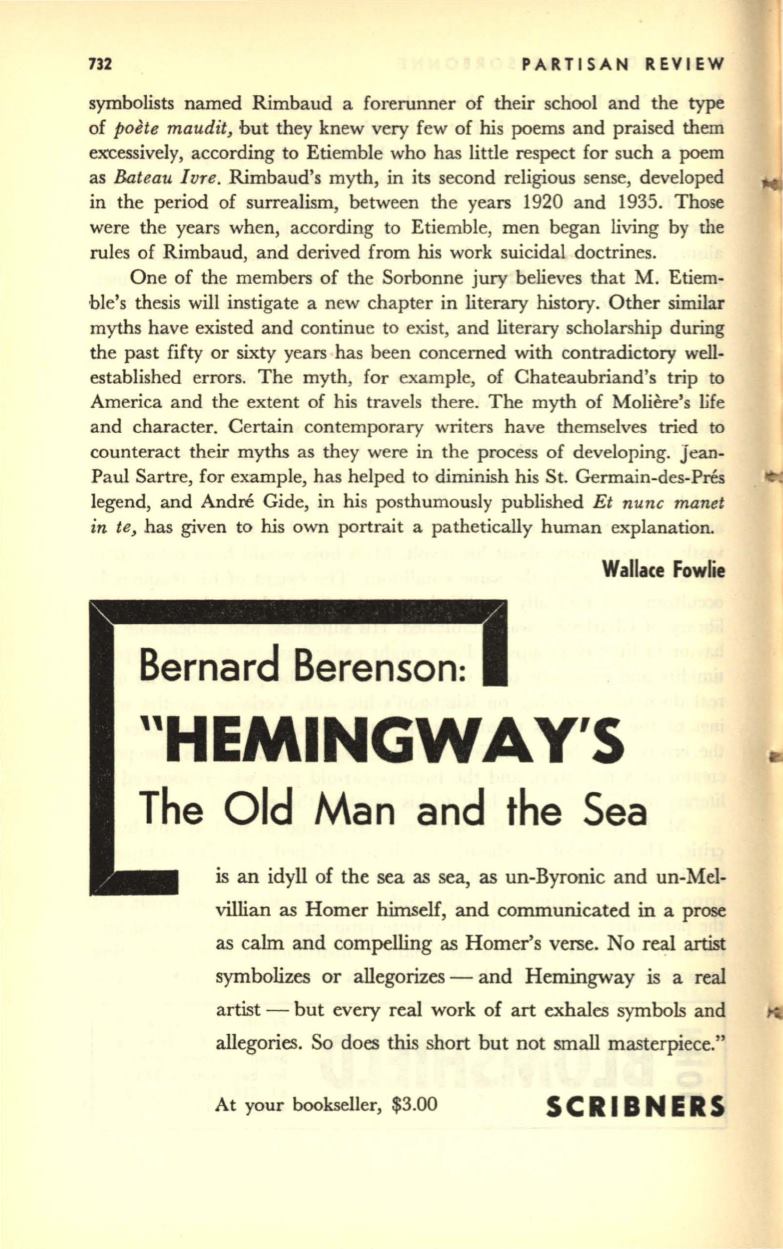
732
PARTISAN REVIEW
symbolists named Rimbaud a forerunner of their school and the type
of
poete maudit,
but they knew very few of his poems and praised them
excessively, according to Etiemble who has little respect for such a poem
as
&teau lure.
Rimbaud's myth, in its second religious sense, developed
in the period of surrealism, between the years 1920 and 1935. Those
were the years when, according to Etiemble, men began living by the
rules of Rimbaud, and derived from his work suicidal doctrines.
One of the members of the Sorbonne jury believes that M. Etiem–
ble's thesis will instigate a new chapter in literary history. Other similar
myths have existed and continue to exist, and literary scholarship during
the past fifty or sixty years has been concerned with contradictory well–
established errors. The myth, for example, of Chateaubriand's trip to
America and the extent of his travels there. The myth of Moliere's life
and character. Certain contemporary writers have themselves tried to
counteract their myths as they were in the process of developing. Jean–
Paul Sartre, for example, has helped to diminish his St. Germain-des-Pres
legend, and Andre Gide, in his posthumously published
Et nunc manet
in te,
has given to his own portrait a pathetically human explanation.
Wallace Fowlie
Bernard Berenson:
"HEMINGWAV'S
The Old Man and the Sea
is
an idyll of the sea as sea, as un-Byronic and un-Mel–
villian as Homer himself, and communicated in a prose
as calm and compelling as Homer's verse. No
re~l
artist
symbolizes or allegorizes - and Hemingway is a real
artist - but every real work of art exhales symbols and
allegories. So does this short but not small masterpiece."
At your bookseller, $3.00
SCRIBNERS


